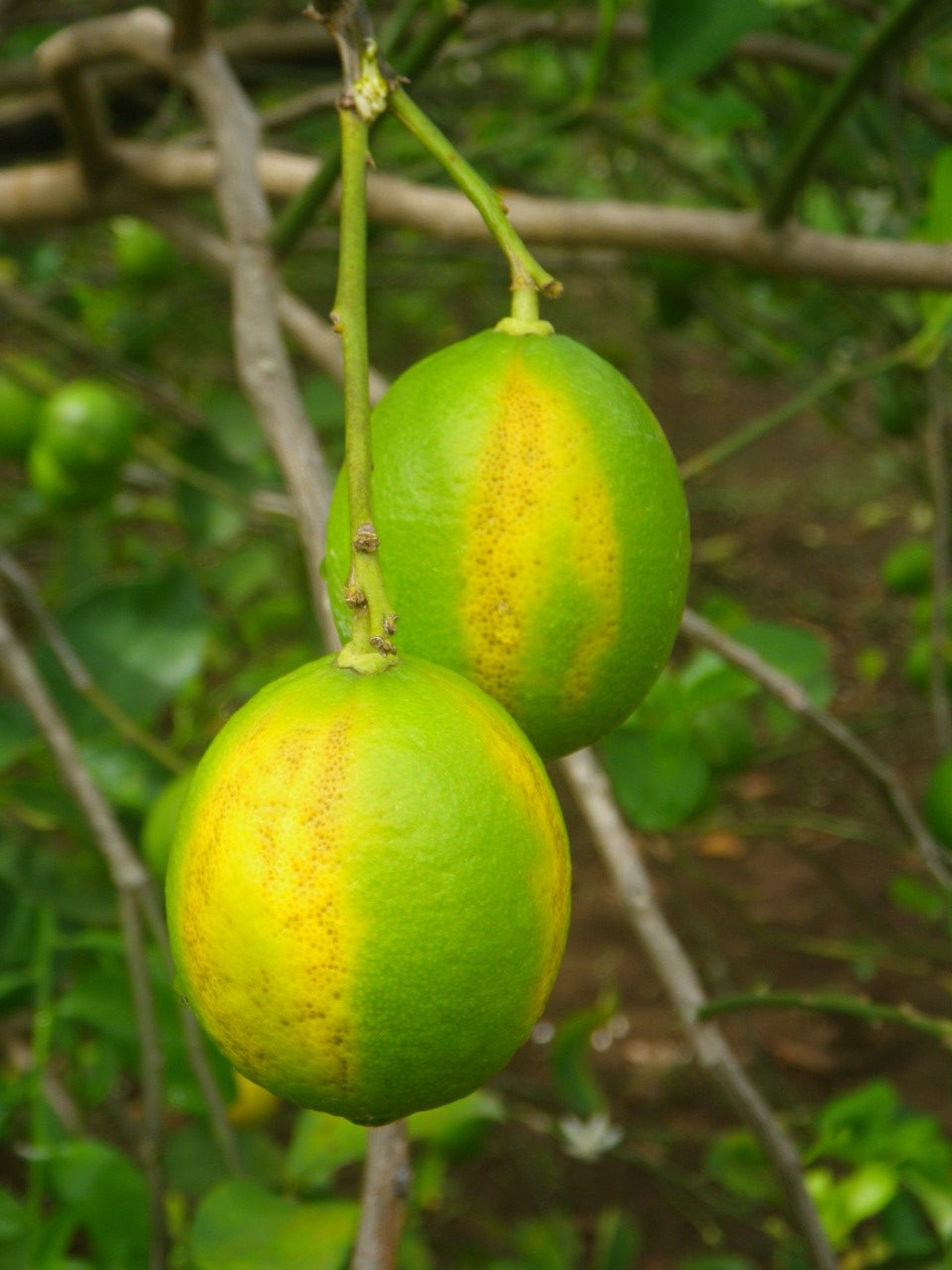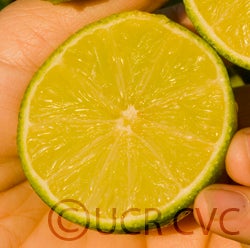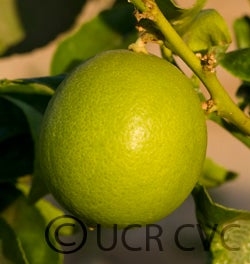Citrus latifolia (Yu. Tanaka) Tanaka
CRC 4170
PI 658363
VI 708
Source
Received as budwood from Florida, United States, via the Citrus Clonal Protection Program, 2006.
Parentage/origins
Parents unknown.
Rootstocks of accession
Carrizo citrange
Season of ripeness at Riverside
October to December
Notes and observations
11/2024, TJSW: Since reporting the early symptoms of wood pocket observed in the variety collection SPB -7 trees, the trees steadily declined and were removed this month. Both trees had extreme dieback with breaks and cracks in the trunk and lateral branches.
01/2022, RRK and TJSW: The Persian lime SPB-7 trees in the variety collection and Coachella Valley Agricultural Research Station in Thermal, CA, have shown symptoms of developing wood pocket on fruit and leaves. See photo of fruit with brown streaks on the rind, a typical symptom of wood pocket. These images are from the trees in the CVC.
RRK, 12/2006: This selection of Persian-type lime is said to be free of the genetic disorder wood pocket, which is found in many of the large-fruited acid limes. Wood pocket was formerly very common in Florida and caused extensive losses. The industry requested help from researchers and after screening more than 100,000 trees, 10 trees were identified that were apparently free of wood pocket, based upon their survival. The current selection (SPB-7) was entered into the program in 1954 as Li-38-1-1-X. This selection was apparently erroneously identified as being wood pocket positive and was dropped but later re-instated and never showed wood pocket symptoms. The current selection was entered into the foundation program about 1961 and the current DPI SH bud source descended from a tree planted in the Haines City Foundation Grove. This information redacted from an email from Mike Kesinger, 06/25/2006. Because of this budsource, the Florida Persian lime industry became virtually free of wood pocket by the early 1970s.
Note: This budsource has been of much pre-release interest to many different persons in many areas of the world. It should, however, be used with caution until it is verified that it does not develop wood pocket under local conditions and cultivation practices. This is particularly true in very hot areas such as Oman, where development of this problem is more rapid and intense. Trees of this selection have been planted at various places in California for evaluation as to the development of wood pocket. One of these locations is the Coachella Valley Agricultural Research Station in Thermal, CA. Since wood pocket develops more rapidly at high temperatures, the trees in Thermal should be the most susceptible to development of wood pocket. More information on these observations will be provided as it becomes available.
Additional information on wood pocket may be found on the Ecoport website as slideshows in english and in spanish or as an eNarrative.
Availability
Commercially available in California through the Citrus Clonal Protection Program. Click here to order budwood.
USDA Germplasm Resources Information Network page for Persian lime SPB-7
Bibliography




